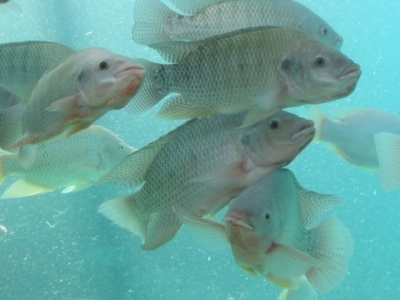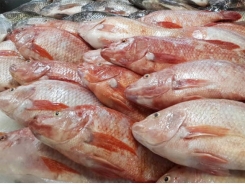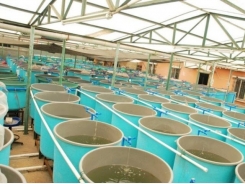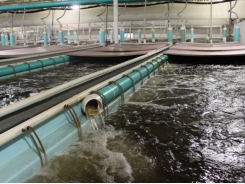Mercury feed contamination may affect feed intake in fish

Fish experiencing mercury contamination may see short-term changes in feeding behavior and longer-term biochemical alterations, say researchers.
An international team of researchers from Australia and Brazil examined the influence inorganic mercury had on the feeding behavior and development of yellowfin bream.
“The present study aimed to investigate the effects on feeding behavior and tissue biomarkers in response to a diet containing different concentrations of inorganic mercury, on juvenile yellowfin bream (Acanthopagrus australis),” the researchers said. “The link between feeding behavior and biochemical marker response in muscle, intestine, liver and gill were also considered.”
The research team found that oral exposure to the metal left fish attempting to feed more often and less able to do so, the researchers said. “This study showed that fish can recover from initial feeding behavior effects of inorganic mercury, but showed delayed response in tissue biomarkers,” they added.
“Although inorganic mercury is not as toxic as methylmercury, the current study showed that a diet with sub-lethal concentrations of inorganic mercury for 16 days resulted in a change to feeding behavior of yellowfin bream (A. australis),” the researchers said. “Biochemical markers in the intestine were correlated to each other, and with mercury treatment concentrations and feeding behavior. Therefore, inorganic mercury should not be ignored in toxicity studies using diet as the uptake pathway.”
Why mercury and feed intake?
Mercury is a metal present in many aquatic environments, but concentrations may vary, the researchers said.
“Studies on the effects of mercury to the health of aquatic organisms have been undertaken, however these studies focused on waterborne exposure to inorganic mercury or dietary exposure to methylmercury and most studies have used high mercury concentrations,” they said.
Inorganic mercury has been shown to accumulate after dietary exposure, they said. However, it is possible that inorganic mercury can be methylated in fish intestines or demethylated and more work is needed to improve the understanding of mercury toxicity.
Additionally, contaminants can alter fish feeding behavior, which can influence fish populations, they said. But, there has been little work done tracing the influence of inorganic mercury on enzyme production in fish.
“Biochemical markers are often used in toxicology as early warning signals prior to identifying toxic effects at higher levels of organization,” said the researchers. “Due to the neurotoxic effects of metals such as mercury in organisms, analyses of enzymes involving neurotransmission, such as acetylcholinesterase (AChE), are potentially useful.”
Biomarkers connected to oxidative stress also may be of interest and have been used in other metal toxicity studies, they said.
“Inorganic mercury present in the diet can increase inorganic mercury concentration in fish tissues, which could affect fish health,” they said. “Therefore, toxicological studies considering oral exposure to inorganic mercury need to be undertaken.”
The research team focused on juvenile yellowfin bream because they are a fish that is commercially important for producers, they said.
Methods and materials
A commercial feed was mixed, in a 1:1, ratio with feed soaked in differing concentrations of mercuric chloride to create three trial feeds and a control feed with no added mercury, the researchers said. Concentrations were 0.5, 2 and 5mg L-1.
Fish were weighed and given seven days of acclimation then started on one of the diets – control, low, medium or high – for a period of 4, 8 or 16 days, they said. A depuration experiment was done with fish getting the medium diet for 4 days then the control for and additional 4 or 12 days.
Feed consumed was measured and uneaten feed was removed from the tanks, they said. Feeding behavior also was recorded and analyzed.
Fish were harvested at the end of the feeding trials and length and weight were noted, they said. Tissue samples were collected for biochemical analysis and mercury analysis.
Results
Differences in fish size and weight were found by diet, but not by exposure period, said the researchers. Levels of mercury found in fish tissue found little difference among diets, exposure period or the combination of both.
Fish in the control group were larger and bigger than fish getting the low and medium diets, they said. However, fish getting the high mercury diet were similar in size and weight to the control group fish.
Feed intake varied with the different exposure periods but not among diets or in the interaction between diet and time period, they said.
“After 4 days, exposed fish attempted feeding more often, and showed a significantly lower eating success than controls,” they said. “However, these differences became less notable with longer exposure periods.”
Although the time spent eating was similar for all diets and exposure periods, the number of attempts to eat varied by time-period and there was a connection found between exposure period and diet, they said. “Considering the 4-day exposure experiment, exposed fish at the end of exposure (last feeding) attempted to eat less often than at the first feeding, but only the low treatment was significantly lower on the last day,” they added as illustration.
Differences were seen in feeding attempts for different periods for some of the diets, but no clear pattern was found, they said. However, when considering eating success patterns did develop.
No differences in eating success for the diets were seen in the 8 and 16-day exposures, they said. But, after 4 days the control group had better success than exposed fish – particularly those getting low or high diets, and the fish getting the low diet were less successful after 4 days than they were at 8 or 16 days.
“Most biochemical markers varied over time, regardless of mercury treatment,” they said. “However, biomarker responses to mercury were also observed, mostly with increased exposure period and were dependent on the tissue analyzed.”
There was no diet effect on AChE activity in muscle tissue by diet, but there was reduced activity for exposed fish after 8 and 16 days compared to 4, they said. Lipid peroxidation (LPO) in muscle tissue of fish on the low diet was reduced when compared to control and in the intestine levels dropped according to length of exposure.
In the liver, LPO levels rose over time and at 16 days tended to be higher than control, they said. In the gill, fish on the medium and high diets had higher levels after 16 days than other fish groups.
There was an inhibition of glutathione S-transferase (GST) activity in muscle for fish on the high diet after 16 days, while there was more stimulation of GST after 16 days than 4 in the intestine and liver, they said.
For the depuration experiment, fish at 16 days had less mercury in muscle than fish at 8 days of exposure, they said. No significant differences in biometric parameters or food consumption were found.
Source: Marine Environmental Research
Authors: C. Harayashiki, A. Reichelt-Brushett, K. Cowden, K. Benkendorff
Related news
Tools

Phối trộn thức ăn chăn nuôi

Pha dung dịch thủy canh

Định mức cho tôm ăn

Phối trộn phân bón NPK

Xác định tỷ lệ tôm sống

Chuyển đổi đơn vị phân bón

Xác định công suất sục khí

Chuyển đổi đơn vị tôm

Tính diện tích nhà kính

Tính thể tích ao




 Dietary curcumin may boost fish survival, performance in…
Dietary curcumin may boost fish survival, performance in…  What to do with empty big box stores?…
What to do with empty big box stores?…